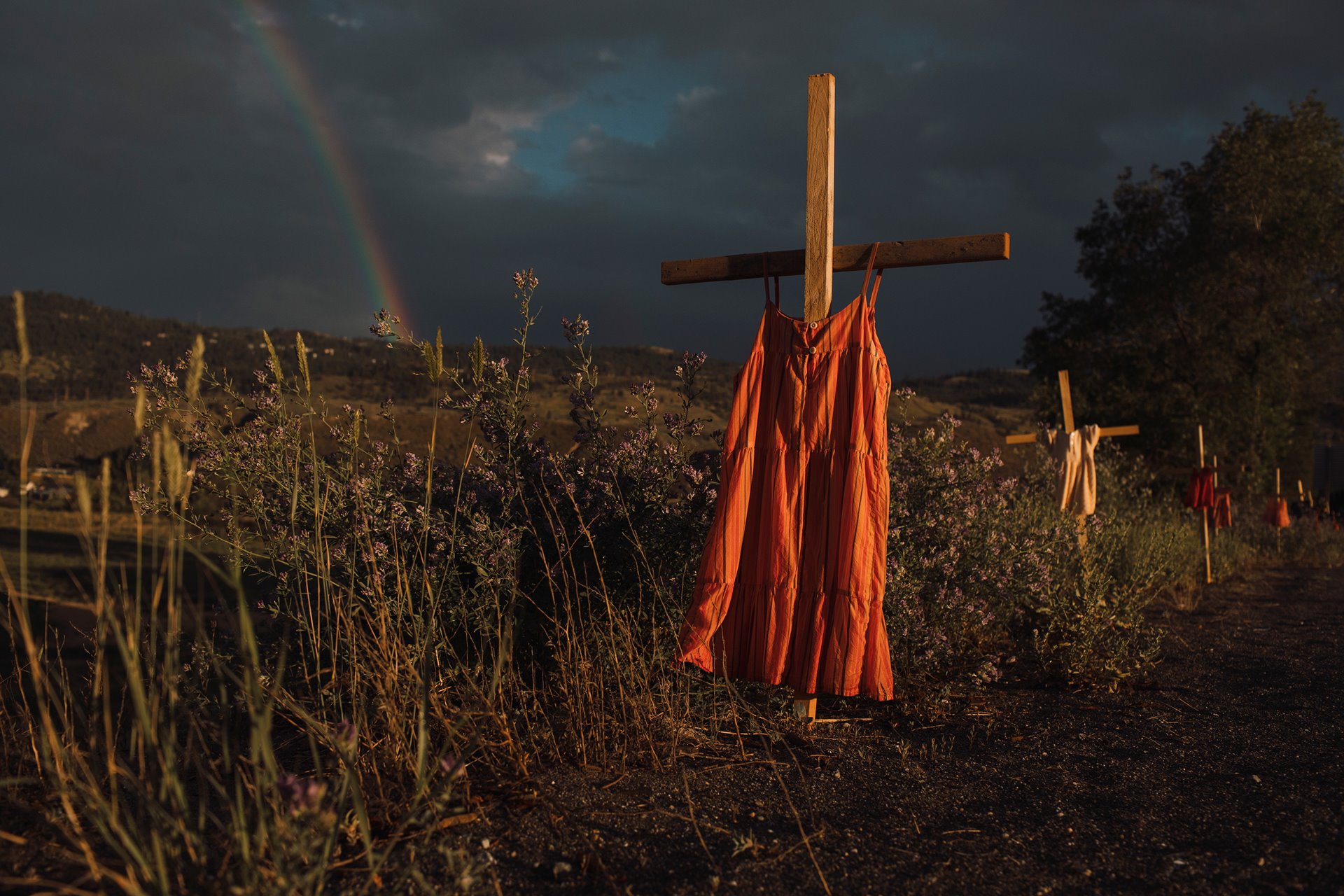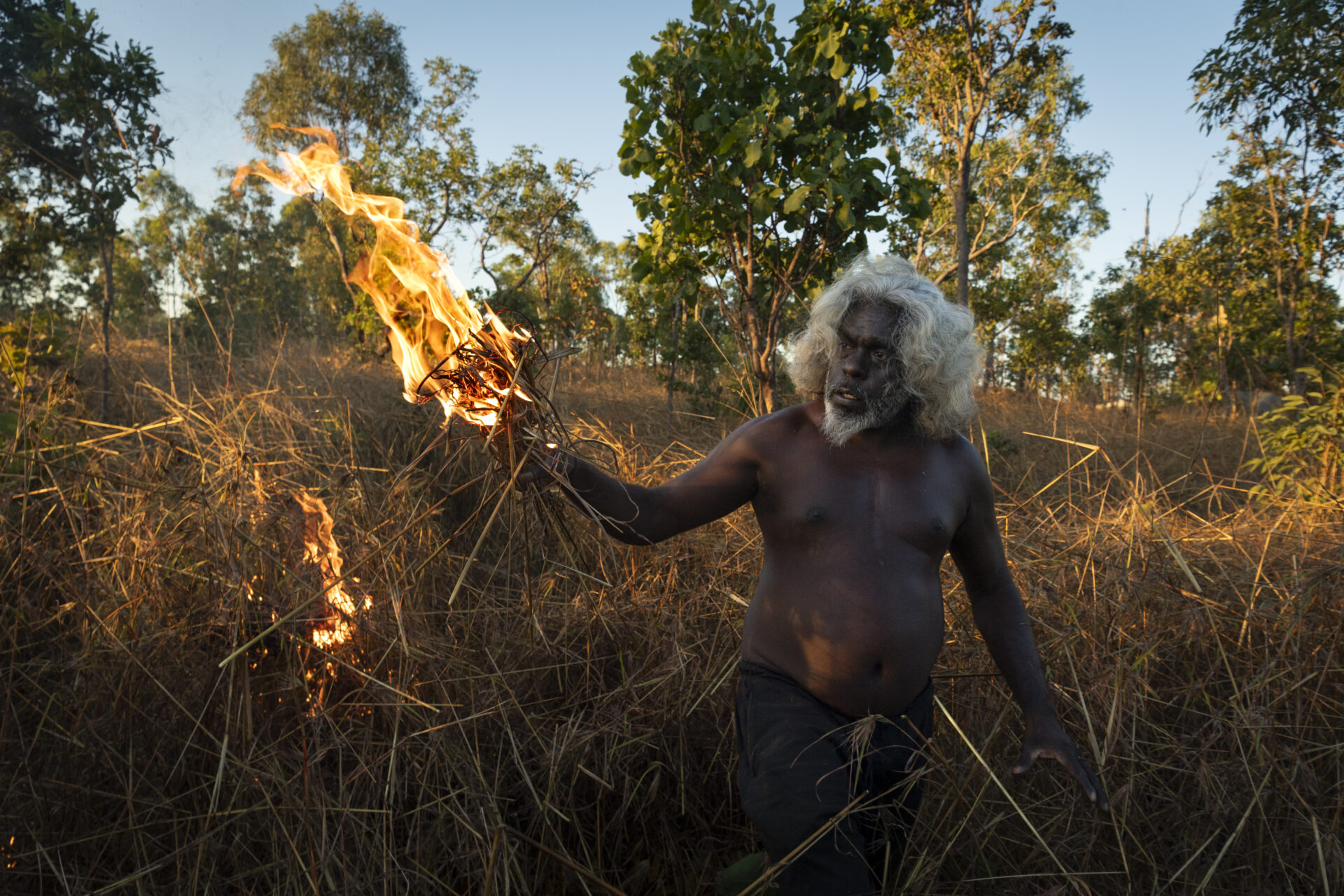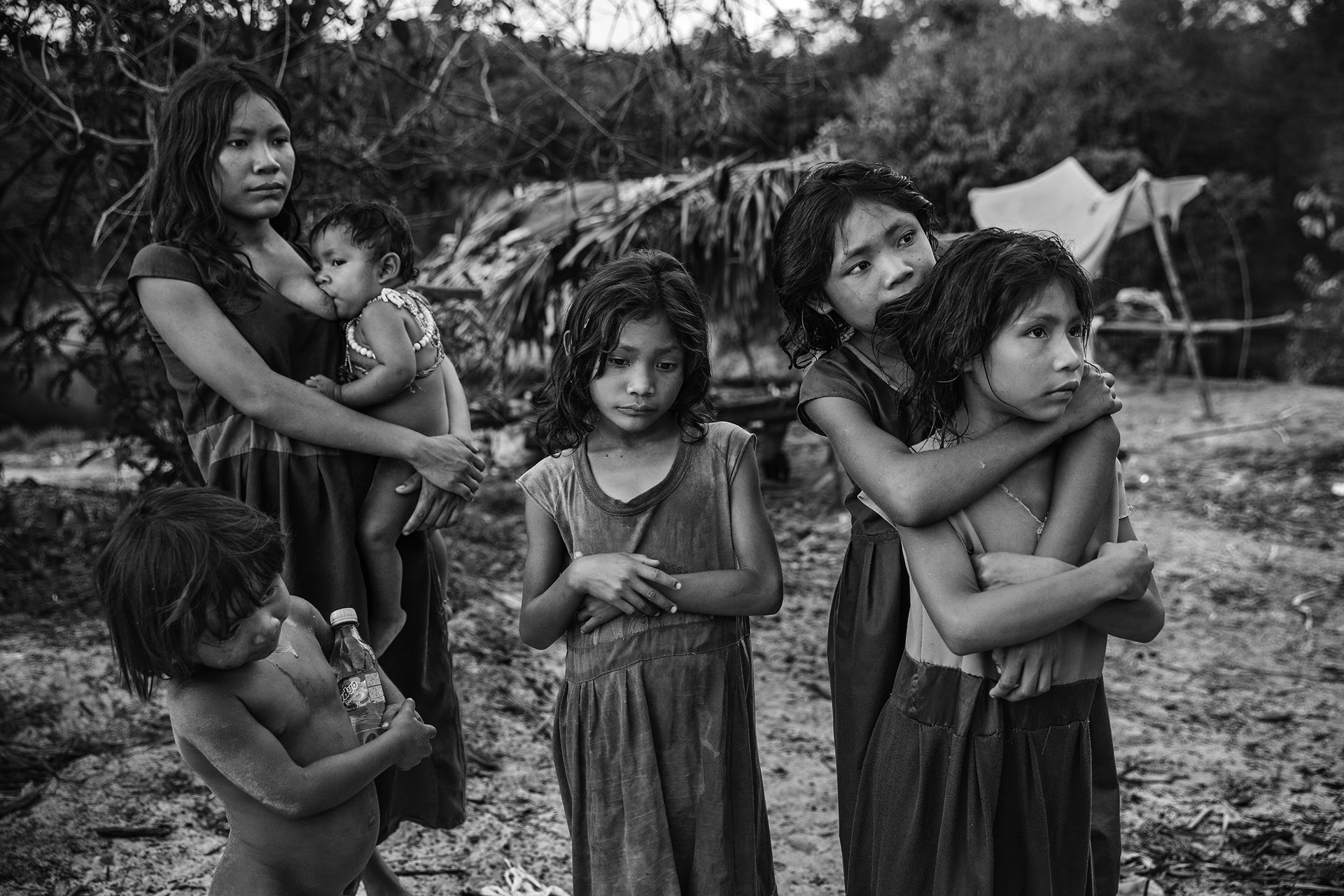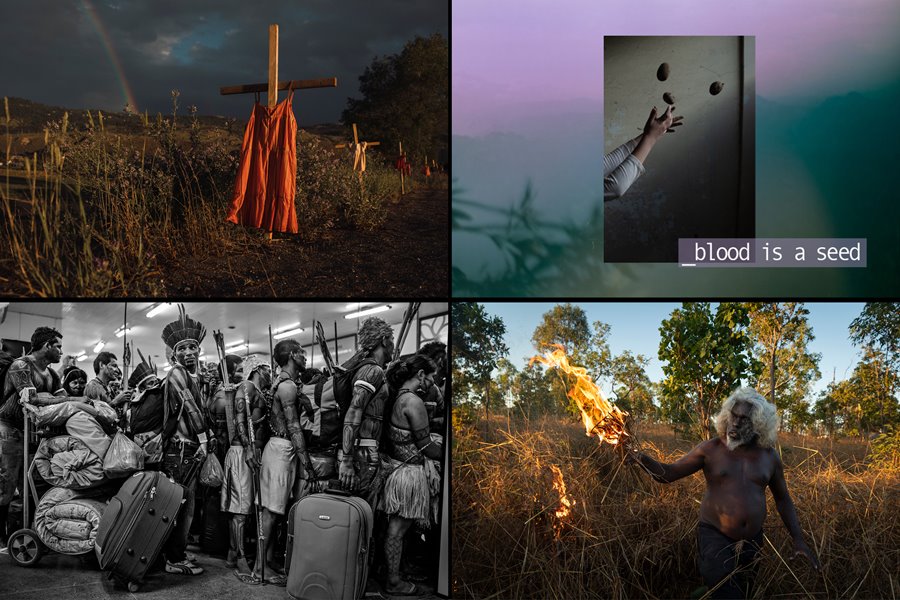The winners of the 2022 World Press Photo Contest were announced on Thursday, and for the first time in the competition's 67-year history, the World Press Photo of the Year is a photograph without any people in it.
The winning photograph, by Amber Bracken for The New York Times, depicts a memorial service held to commemorate the children who died at the Kamloops Indian Residential School in British Columbia, an institution created to assimilate Indigenous children. In May last year, 215 unmarked graves were discovered here.
“This is a quiet moment of global reckoning for the history of colonisation, not only in Canada but around the world," Effendi said about the photograph.

Credit: Amber Bracken, Canada, for The New York Times, World Press Photo 2022
Upwards of 150,000 children passed through the doors of residential schools, which began operating in the 19th century, and at least 4,100 students died while at the schools, as a result of mistreatment, neglect, disease or accident.
Interconnected global winners
In total, some 4,000 photographers from 130 countries took part in this year's annual competition for photojournalism and documentary photography. This year's winners are 24 photographers from 23 countries.
According to the jury, all global winners pay tribute to the past "while inhabiting the present and looking toward the future."
"The stories and photographs of the global winners are interconnected. All four of them, in their own unique ways, address the consequences of humanity’s rush for progress, and its devastating effects on our planet," global jury chair Rena Effendi said.
Strategic fires
"Saving Forests with Fire," the work by Matthew Abbott, for National Geographic/Panos Pictures which was awarded the World Press Photo Story of the Year looks toward the future with a solution-based approach. Find the full story here.

Aboriginal people have been strategically burning the country to manage the landscape and to prevent out of control fires for centuries. Credit: Matthew Abbott, Australia, for National Geographic/Panos Pictures/World Press Photo 2022

Credit: Matthew Abbott, Australia, for National Geographic/Panos Pictures/World Press Photo 2022
While last year saw regions across the world being ravaged by wildfires, Abbott's work shows how the Nawarddeken people, the traditional owners of West Arnhem Land in the north of Australia, live with and strategically use fire to protect their environment.
The Warddeken rangers and their practice, known as cool burning — slowly moving fires that burn only the undergrowth and remove the build-up of fuel that feeds bigger blazes — prevent larger, more destructive fires from occurring in the hotter, dryer months of the year.
Link environment and social issues
"Amazonian Dystopia" by Lalo de Almeida, for Folha de São Paulo/Panos Pictures won the competition's first World Press Photo Long-Term Project Award, which recognises stories that provide a long-term look at a specific issue.
De Almeida delved into the social, political and environmental effects of deforestation, mining, and exploitation of resources in the Brazilian Amazon, of which the devastation has been running at its fastest pace in a decade, over 12 years.

Women and children from the Pirahã community, standing next to their camp on the banks of the Maici River, watch drivers passing by on the Trans-Amazonian highway hoping to be given snacks or soft drinks, Humaitá, Amazon, Brazil. Credit: Lalo de Almeida, Brazil, for Folha de São Paulo/Panos Pictures/World Press Photo 2022
"You can't separate the environmental and the social questions as if they are two different things. You see that the majority of towns that have high levels of deforestation have the highest levels of poverty as well," De Almeida said.
"So these are elements that are completely connected: poverty, violence, environmental degradation and deforestation.”
Reclaiming tradition
This year's edition also saw the addition of the first World Press Photo Open Format Global Award, which went to Ecuadorian visual storyteller Isadora Romero for her video Blood is a Seed (La Sangre Es Una Semilla), which questions the disappearance of seeds, forced migration, racism, colonisation, and the subsequent loss of ancestral knowledge.
We’re thrilled to present the first-ever winning project of the World Press Photo Open Format Award: ‘Blood is a Seed’ by Isadora Romero.
Discover the #WPPh2022 awarded work, questioning the disappearance of seeds & subsequent loss of ancestral knowledge: https://t.co/AwdFWJc9jd pic.twitter.com/NseaK29K7u — World Press Photo (@WorldPressPhoto) April 7, 2022
"Losing diversity and seed varieties is not only affecting us as a community because we are losing nutrients and probably some special species will disappear completely. Cultural memory is getting lost as well," Romero explained.
"This knowledge has been passed from generation to generation, and this knowledge is not usually validated by the Western scientific community. I think it's very important to understand how we are losing this memory."
Photos on exhibition
Photographs have also been recognised per region, including North and Central America, South America, Europe, Asia, Southeast Asia and Oceania and Africa.
The awarded photographs, stories and productions will first be shown at De Nieuwe Kerk in Amsterdam, the Netherlands, on 15 April before the exhibition starts its global tour.

